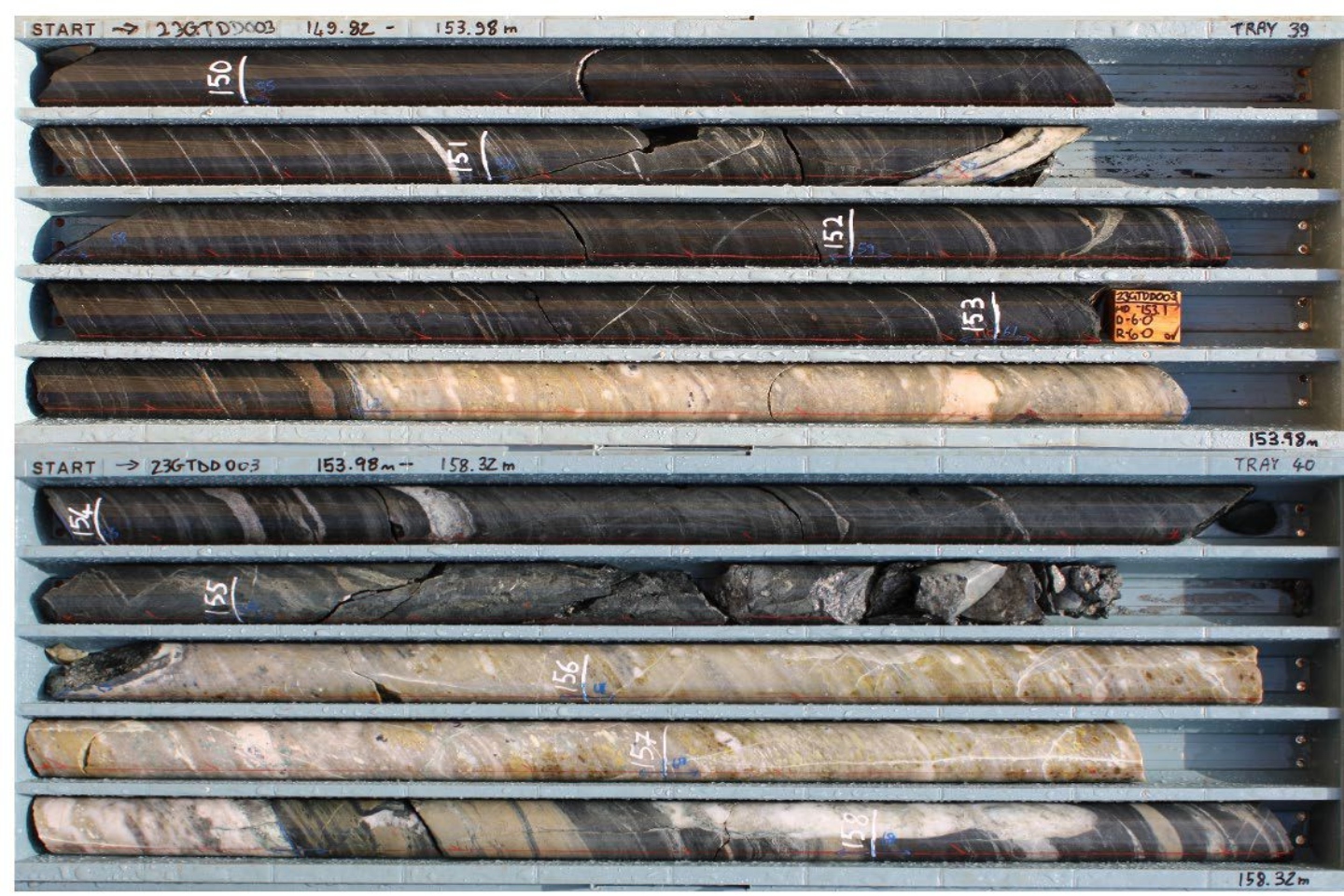GreenTech Metals has produced grades of up to 2.36 per cent lithium oxide from drilling and sampling of its pegmatites in Western Australia’s West Pilbara region – along strike from Azure Minerals’ giant Andover lithium discovery. Andover has an exploration target estimate in the range of 100 to 240 million tonnes at grades between 1 and 1.5 per cent lithium oxide.


GreenTech Metals has produced grades of up to 2.36 per cent lithium oxide from diamond drilling and outcrop sampling of its pegmatites in Western Australia’s West Pilbara region – 34km west along strike from Azure Minerals’ giant Andover lithium discovery.
Andover has an exploration target estimate in the range of 100 to 240 million tonnes at grades between 1 and 1.5 per cent lithium oxide and GreenTech believes its latest results provide a new perspective on its pegmatites.
The company’s ground lies 16km south-east of Karratha. It holds a 100 per cent interest in its Ruth Well licence, which is complemented by a 51 per cent interest in the eastern contiguous Osborne joint venture (JV) it shares with Artemis Resources (49 per cent).
GreenTech’s diamond drilling program comprised two holes put into the Northern, or “Kobe”, trend in the Ruth Well license and two holes in the Southern, or “Osborne”, trend within the Osborne JV ground, for a total of 1600m late last year.
GreenTech Metals executive director Tom Reddicliffe said: “We have seen our understanding of the Osborne pegmatite trend evolve into a very exciting target with some 700m of strike and with high lithium grades at surface and with the potential for thicker intersections of pegmatite at depth. We believe the West Pilbara region, an address which has quickly become one of the premier global jurisdictions for hard rock lithium exploration remains highly prospective and we are looking forward to reporting regular updates on our exploration progress.”
The two Kobe holes were collared about 3km apart and both intersected spodumene-bearing pegmatite at about 80m depth, successfully confirming their interpreted down-dip projections. In both holes, the intercepted pegmatite thicknesses reflected surface outcrop, with the best grade reported in one hole coming in at 0.65m at 0.6 per cent lithium oxide within a 4.2m-wide mineralised zone going 0.22 per cent lithium oxide from 153.3m.
Importantly, the outcrop above the intercept yielded previous rock chip sample results running lithium oxide grades of 1.53, 1.53 and 0.99 per cent.
Taken in context with additional caesium, niobium, rubidium and tantalum LCT-style pathfinder mineralisation, the company says the holes confirm the fertility of the Kobe trend at depth and are consistent with the nature of the continuous lithium mineralisation it sees along Kobe’s full 7.5km strike.
The first diamond hole into the Osborne trend ran to 810m deep and intercepted multiple thin pegmatites along its entire length, with two lower and more significant zones. Despite some locational shortcomings, the holes intercepted many pegmatites with variable thicknesses up to 24.6m.
The company now interprets the pegmatite target to be more steeply-dipping than originally thought.
Management is confident that its drilling confirms that thick pegmatites exist in the Osborne trend and that they are fertile, based on their LCT-style of mineralisation. It says its geological mapping and additional infill rock chip sampling also confirm the continuity of significant pegmatite-hosted lithium mineralisation in the Kobe trend, with a single rock chip sample picking up a grade of 1.98 per cent lithium oxide near the north-western corner of the licence.
Importantly, the company’s latest rock chip sampling returned grades of up to 2.36 per cent lithium oxide in further sampling of the Osborne trend, a find supported by other rock chip results including 1.64, 1.22, 1.15, 1.01 and 0.98 per cent lithium oxide. The results lie in the same area where previous sampling included a result of 3.63 per cent lithium oxide and taken together, they extend the Osborne mineralisation 600m westwards to make up a total strike length of 700m that remains open.
GreenTech says it is now planning additional mapping, rock chip sampling and infill soil sampling to test the Osborne trend for possible further extensions where it projects westward into the Ruth Well ground.
Previous mapping and soil sampling in the Osborne trend at Ruth Well highlighted several pegmatites in the mid-north of the licence and a well-defined anomalous continuity in soil lithium that looks like it could run all the way east towards the Osborne trend. However, clear access along its entire length is interrupted by third party tenure.
Management says infill soil sampling has already been completed in the Ruth Well ground on a 200m-by-50m spacing to provide further data where historic sampling was completed at 400m-by-100m spacing. Results so far from the program indicate a 5km to 6km-long line of soil anomalies in the Osborne trend, with spot highs up to 189ppm lithium.
The company has plenty of work to be going on with as it builds its own story in at least two major lithium-rich trends striking for almost 20km across its ground, comprising almost a third of the east/north-easterly strike of the major Karratha lithium corridor.
That corridor has been shown by several significant discoveries to extend for more than 60km as far as about 20km east of Roebourne, with potentially further extension beyond that.
Is your ASX-listed company doing something interesting? Contact: matt.birney@businessnews.com.au













